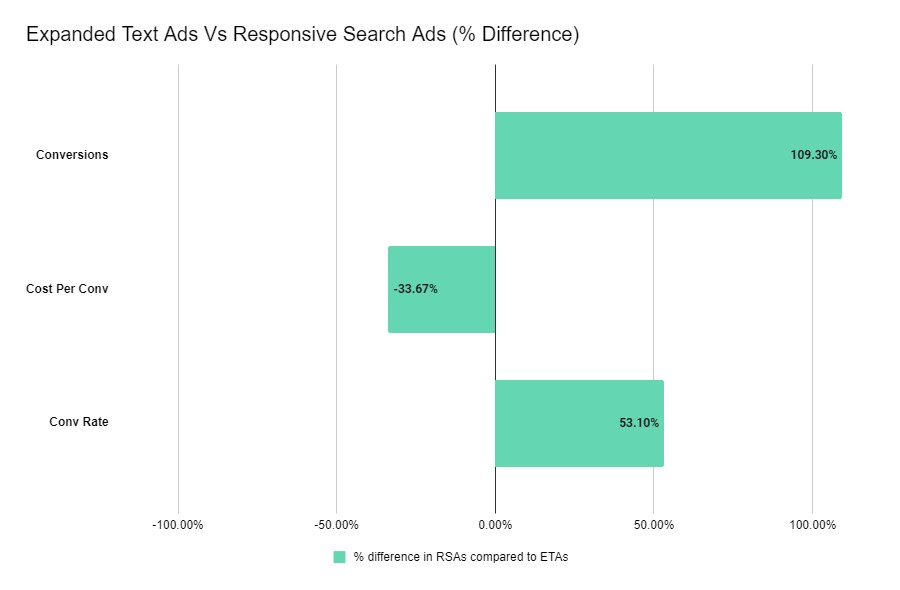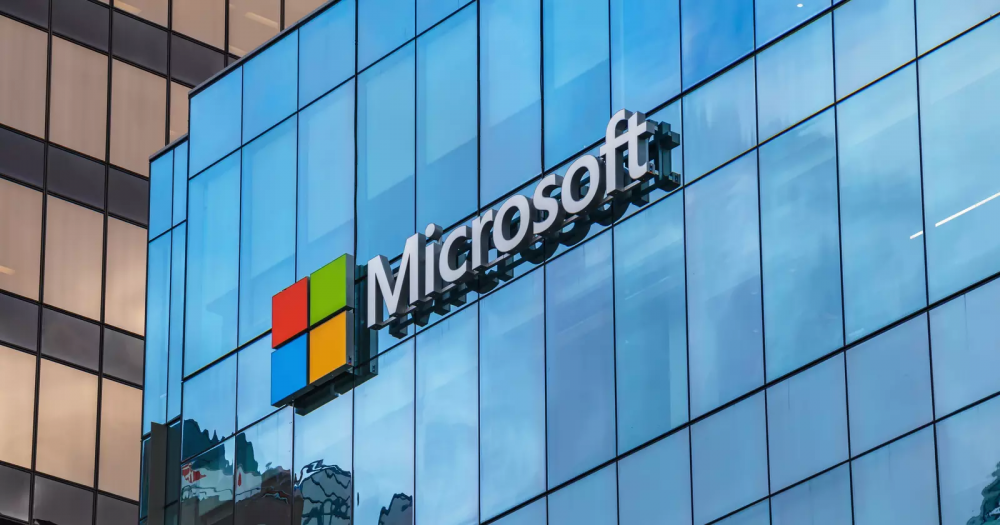Google thrives on pushing forward with their own brand of innovation. As digital marketers, it’s up to us to go with the tide, wherever it takes us.
It’s been over a year since Google Ads released responsive search ads (RSAs) into beta as the tech giants continue to replace older features with automated ones. The new ad type has received high praise from PPC professionals but just how effective are they? Will rival ad networks like Microsoft Ads try for a piece of the action?
In this blog post, we’ll be trying to answer those questions – with the help of Mark Neale, our Head of Paid Media, and assess whether responsive search ads are all they’re cracked up to be.
What are responsive search ads?
Responsive search ads are Google’s way of getting a customer immersed in automated ad creation. You can create up to 15 adaptive headlines and 4 descriptions based on relevant messages associated with your business. Over time, Google Ads tests different combinations and “learns” which ads perform well.
When we beta tested RSAs for Adzooma, we saw a significant increase in conversions and conversion rate. In effect, responsive search ads share similarities with split testing.
Due to their success and widescale adoption, Mark also thinks responsive search ads will become the standard format of adverts as part of the evolving advertising model.
“After introducing RSA’s, the ads saw a conversion rate increase of 53.1%. Conversions increased even though the landing pages were still the same as Expanded Text Ads, with a 109.3% increase. Has Google found the perfect ad combination to set a user’s expectation before reaching the landing page?”

Test the effectiveness of your RSAs with Ad strength
This metric provides feedback on optimising your ads to convey the best messages to your customers. It comes with 2 components:
- Overall rating of the ad’s effectiveness
- Specific action items
The most common ways to improve your Ad Strength include missing ad groups and keywords in your ad groups, the final URL not included, headlines and descriptions that are too similar and too short.
The ratings go from Poor to Excellent, and offer specific action items to improve your Ad strength such as “Increase the length of the headline”. By following all these steps to optimise your RSA ads, you’ll be onto a winner in no time.
Mark says:
“Ad Strength indicates the quality of the advert in terms of headline and description line usage. In the example below the Ad Strength is Excellent which also has the lowest cost per click out of the three ads. As a best practice, we recommend one RSA is paired with two expanded text ads.”
Reporting on responsive search ads
With the Google Ads reporting tool, you can also see stats exclusive to RSAs including top combinations, headlines and descriptions. To see it, simply go to Ads & extensions, add a filter for Ad types under Attributes, and select Responsive search ad.
How to create an RSA
Creating a responsive search ad is a piece of cake.
- Select Ads & extensions from the page menu on the left.
- Click the plus button and select Responsive search ad.
- Enter the URL and display path text for the page you want to convert.
- Next, write your headlines. You can enter up to 15 and a minimum of 3.
- Finally, write your descriptions. You can enter up to 2 and a minimum of 4.
- Click Save.
You’ll also get a preview of your ad as you type as well as automated ad ideas based on your assets.
The difference between dynamic search ads and responsive search ads
RSAs aren’t the only type of automated search ad.
Dynamic search ads (DSAs) create headlines and automatically choose the landing page based on frequently searched phrases and search queries.
The benefits of DSAs are similar to RSAs in that they save time through automation. The nature of DSAs means they bring in more targeted traffic through relevant advertising based on related search terms.
But there are limitations too. If you don’t update your site regularly, you’re open to serving ads with potentially broken links or to pages that aren’t optimised. You also need to have available landing pages to avoid low conversion rates.
And since the headlines are dynamically generated, creative control is relinquished. Your site would need to match the tone of your headlines to prevent disruption in the customer journey and, by extension, your conversion rate.
Which ads are better?
Mark says responsive search ads are the best choice between DSAs and RSAs.
“Responsive search ads are the best, hands down. Dynamic search ads essentially create headlines and automatically choose the landing page for you. But that leaves a wide scope for your ads to serve incorrect pages. With RSAs, you still have that level of control.”
But ultimately, it’s down to what works best for your business. Make sure all your pages are updated and available to avoid any issues if you decide to use dynamic search ads.
What are the best practices for responsive search ads?
Google recommends the following:
- 2 expanded text ads with one RSA per ad group
- Multiple headlines and descriptions (at least 5 headlines and 2 descriptions) with unique copy and varying lengths to aid Google’s machine learning and your ad performance
- Featuring some form of service, solution or highlighted USP as they contribute to higher conversion rates
The more data Google Ads has, the better the results.
How do RSAs differ between Google and Microsoft Ads?

Microsoft has recently opened a responsive search ads beta. Advertisers are recommended to:
- Add 8-10 unique headlines, at least 2 unique descriptions, and clear calls to action (CTAs).
- Pin headlines and descriptions to give more control over how your ads display.
Juan Sepulveda and Eugene GoldenShteyn from Microsoft wrote in a blog post that the more headlines and more descriptions that are provided, the higher the probability of the ad being more relevant in any given auction.
Outside the search engines, Facebook offers its own form of dynamic advertising in the form of Dynamic Creative Ads. Using the basic elements of a Facebook ad, Facebook automatically generates ad combinations in the same as Google and Microsoft.
Are responsive search ads out of beta yet?
Currently, no. Google recommends to “regularly monitor the performance and status of your ads” to see if there are any significant changes. Mark says it’s one of the longest-running Google betas he’s ever known.
“The RSA beta has been available for over a year. What do we think of the ad format so far? It’s worth the time to ensure headlines and description lines flow, as Google’s machine learning will pair the best combination for that search query.”
But Mark also explained why ETAs were crucial in testing the performance of RSAs:
“Testing with Expanded Text Ads is paramount in order to benchmark the success of RSAs and if performance is lower than expected, it’s time to refresh the headlines and descriptions to test again. The more headlines and descriptions you can provide the better Google can test on your behalf to remove the setup needed for A/B ad testing.”
UPDATE: Google announced responsive search ads were out of beta and available to all advertisers on 22nd October.




